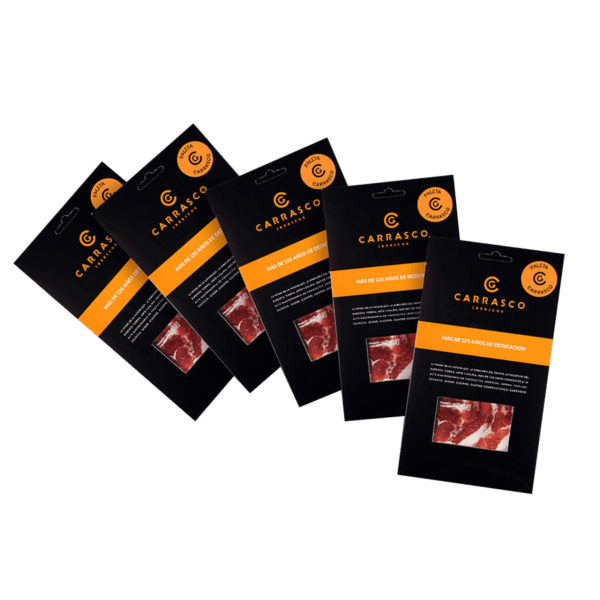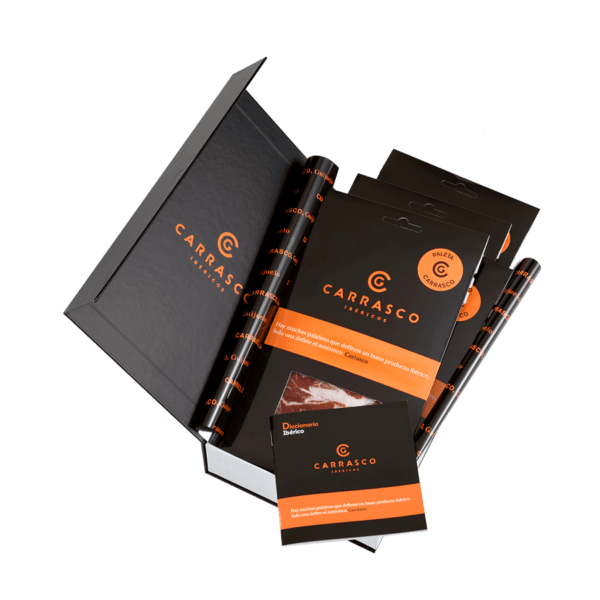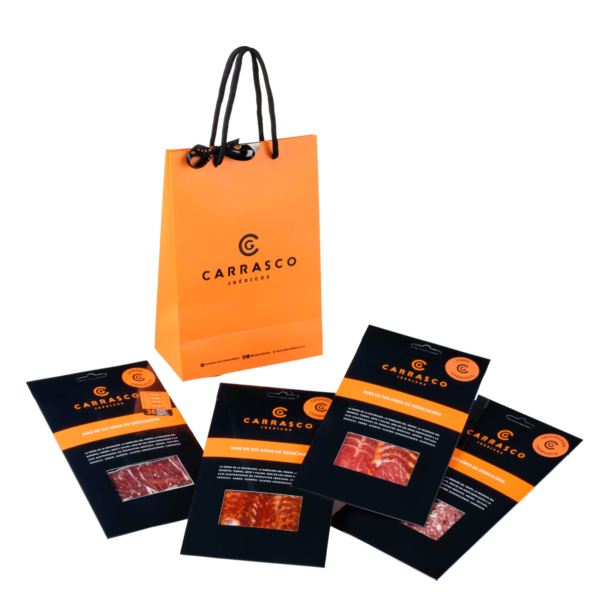The ham cut
The cut science
01 Necessary equipment
A honing steel, it is important that the knives are sharp before using them.
A ham knife, thin, and flexible
A knife to remove the crust.
A short deboning knife, also called a lace knife, and a good ham holder, which must have a solid base and an adjustable cap to fix the hoof.

02 Placement
Place the ham with the hoof up, (unless you plan to consume it over a long period of time, then it would be placed upside down).
03 Ready to cut
With the knife to remove the crust make a deep cut to the bone, in the narrow part of the ham. With this same knife remove all the crust of the ham, the dark layer that covers the fat. Cut the fat into thin layers, always in the direction of the hip bone. Save the layers of fat, which you will use to preserve the ham.


04 Let’s get on with the maza
Now start removing layers of fat on the sides, from the portion that will be consumed straight away, until no traces of yellow fat remain. Do not remove the white fat. The healthy fat of the acorn-fed Ibericos is responsible for its unique flavour. By continuing to cut through the top, the lean ham will appear. At this point it will be necessary to use the ham knife.
05 The perfect slice
Cut in thin strips (6 cm wide and 4 or 5 cm long) including a bit of fat. Cut through all the length of the ham, from the jarrete to the hip bone. As you progress in the cut of the maza, which is the juiciest area with the highest fat marbling, combine the strips from this area with some from the jarrete and the hip, to appreciate the different textures.


06 And now, the babilla!
Start cutting the babilla. Do not forget that this part is more cured than the maza and therefore somewhat harder. The process is the same except that in this case you have to remove less fat. Keep cutting until you find the bone. Use the lace knife to remove the bone stuck to the ham, which you can use for cooking.
07 Protect your ham
Store the ham hanging, at room temperature, in a cool and dry place. Once opened, protect it with the layers of fat, transparent film and a cloth to avoid light.

Find out our products




